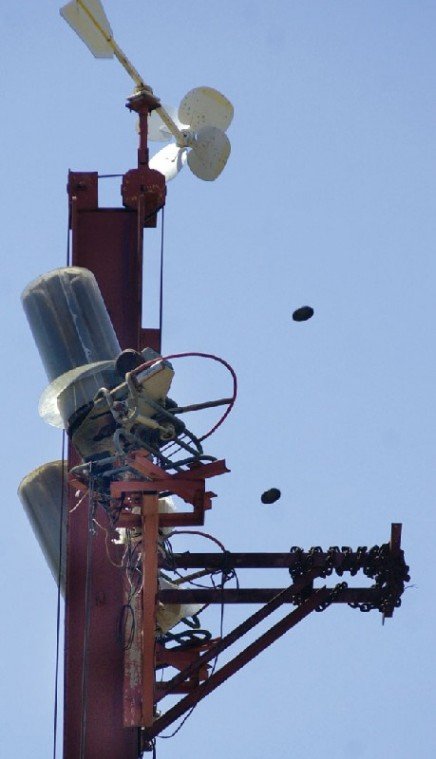On a sweltering summer afternoon at Coyote Valley Sporting Clays
in Morgan Hill, the remote range’s bucolic calm is punctured by the
loud crackle of gunfire in the distance, but the knot of men
tipping back sodas and cold beers at the range’s office doesn’t
flinch.
On a sweltering summer afternoon at Coyote Valley Sporting Clays in Morgan Hill, the remote range’s bucolic calm is punctured by the loud crackle of gunfire in the distance, but the knot of men tipping back sodas and cold beers at the range’s office doesn’t flinch.
Like golf, tennis or baseball fans, they’re out for a day of sport. It just happens to involve shotguns.
Shotgun sports like trap and skeet, where players shoot from standardized courts at clay discs launched into the air, have a long history in the United States, but the game of sporting clays – described by many in the sport as “golf with a shotgun” – takes this general idea on the move, testing players’ skill at more than a dozen hunting simulation stations along a trail. The game, which was imported from England in the 1980s, is now the fastest-growing shotgun sport in the United States, according to the National Sporting Clays Association. It offers players realistic adventure as they blast clay pigeons flying at different altitudes, speeds and directions from stations dotting an ever-changing course.
“Trap and skeet are a little more formal and there’s not nearly as much interaction,” said Tom Ebert, owner of Coyote Valley Sporting Clays. “(Groups doing sporting clays) go out and one person is shooting while the other people are watching and usually heckling. It’s more relaxed, more conversational.”
Though shotgun sports attract newcomers in a variety of age ranges, fascination with the sport starts early for some. Former Indy car driver Willy T. Ribbs, a frequent visitor at Coyote Valley, recalled that he started shooting at age 9 on his grandfather’s Guinda, Calif., ranch.
“I always loved shooting and the art of shooting,” said Ribbs. “If you watch golf, for example, you see that, for a great golfer, it becomes an artistry after a while. There’s a balance and a symmetry and a flow to their actions that comes from years of practice and muscle memory and experience. Shotguns are the same.”
When Ribbs retired from the professional racing circuit in 2001, he still felt driven to compete, so he turned his interests to sporting clays, clenching the state’s sporting clay championship title for his division in 2005. His 14-year-old son now shoots competitively, too.
“The whole family can do it like a whole family goes out bowling,” said Ribbs.
Ribbs credits the sport with turning his son’s scholastic performance around as well.
“It builds self-esteem, and when a child has got self-esteem and they’re successful in one endeavor, they have confidence to be successful in every endeavor,” said Ribbs, whose son has gone from a C and D student to the honor roll.
While larger prize pools in the sport range from $10,000 to $90,000, most shooters enjoy the sport purely for recreation, said Richard F. Anderson, a sporting clay enthusiast and certified instructor who works at Coyote Valley.
“I guess you could call me a geriatric jock,” said Anderson, a septuagenarian who took up the sport in December 1997 after a friend invited him to go shooting. “We go out, and we compete over who broke the most pigeons or who broke the hardest ones. It’s a constant competition and the nice thing about it is that sex, age, none of it is a prerequisite. It’s an even field.”
Anderson religiously practices his shooting, working through two to three 100-bird rounds per week. Sporting clays fly from their traps, whirring through the air like a Frisbee. The clays, which measure 4 1/2 inches across and 1 1/8 inches high are specially fired so they are hard on the outside and soft on the inside, he said. When hit with the peppering blast of a shotgun, they break apart in a satisfying spray of fluorescent orange shards.
Women aren’t as visible a presence in American shooting tournaments, making up about 15 percent of shooters, according to Anderson, but their presence is quickly growing. Women are competing in high-stakes tournaments, winning trophies and shooting recreationally with their husbands in increasing numbers, he said.
San Mateo resident Susan Hooley, a regular at Coyote Valley, got her start watching husband Jim shooting.
“I used to come and pull the counter for him,” said Hooley. “It got boring, so I decided to try it. Now we shoot regularly. We do couples shoots and tournaments, and all of our vacations are pretty much done around shoots.”
Hooley wasn’t sure that telling her co-workers about her new passion would be a good idea, though.
“We live in the Bay Area, so the first couple of years at my job I didn’t tell anyone,” said Hooley. “A lot of people were surprised and curious. I think a lot of women don’t know about it, or people just have a social stigma about guns.”
Most people are simply curious at enthusiasts’ interest, said Anderson, but that’s just fine with Tom Ebert.
“We have six certified instructors that work here by appointment and do private lessons, but we also get a lot of groups – small groups, company groups, church groups – that come out and want to try it,” said Ebert.
For the curious, Coyote Valley offers a 50 shot experience package for groups of four or more. For $49 each, participants can rent a gun and practice their shooting on 50 sporting clays, ammunition included.
“If you’re in the sport, a typical day out here is similar to a typical day going and shooting golf,” said Ebert. “The average cost is around $65 to go out and spend a couple of hours, shoot 50 to 75 rounds, rent a gun and buy a soda.”
Like other hobbies, it’s not about the money spent to pursue it, but the fun, said Anderson.
“Where else can you usually break things?” asked Anderson, a smile creasing his cheeks. “Besides, it makes everybody’s hubcaps safer.”
So you want a gun
Like golf clubs or a tennis racquet, a gun is meant to fit its owner. Shotguns may look alike, but selecting the gun that’s right for you will take a bit of trial and error, according to Richard F. Anderson, a sporting clay enthusiast and certified instructor who works at Coyote Valley.
To really get a feel for the gun you’ll enjoy, don’t buy right away, Anderson said. Instead, borrow or rent as many different types of guns as you can from your range clubhouse to get an idea of what works for you. Talk to the range master and consult gun shop owners as well before making a purchase.
Most guns at the Coyote Valley Sporting Clays pro shop range between $800 and $2,500, according to Tom Ebert, the range owner, but they hold their value extremely
well, said Anderson. That’s important, he noted, because a shooter’s first gun usually only lasts about a year.
“After that, you’ll probably want to trade up because your skill level will have improved enough that the gun really isn’t suitable for you,” Anderson said.
Shotgun games
Trap
Shooters, arranged in an arch around five stations, call for the launch of a pigeon from a box at their center known as a trap. The trap throws out single targets in five randomly selected angles, always throwing the pigeon away from the shooter. Each player shoots five times from each station, for a total of 25 shots per round.
Skeet
Skeet is similar to trap, but with an added twist. Players test their skill from eight stations, arranged in a semi-circle, but must shoot at two targets instead of one. These targets are launched from two separate stations on either side of the semi-circle known as the “high house” and “low house.”
The high house, the taller of the two target launchers, is located to a player’s left and throws toward his or her right. The low house is shorter and throws the clay from right to left.
As the shooter progresses around the course, the angle of his or her shot progresses, shooters aim for different marks, either incoming and outgoing or a crossing of the clays in mid-air.
Sporting clay
Sporting clays are less rigid, more simulation-oriented games. Unlike trap and skeet, which have set rules and directions of flight for the clay pigeons, sporting clay courses are designed by their proprietors, and more closely mimic actual hunting conditions. A standard round of sporting clays will offer shooters 100 targets, but the number of stations varies by course.
Depending on the station where a shooter is standing, multiple clays may fly away from him, toward him, or over his head. They may also be far away or relatively close, and their angle, speed and direction may vary considerably from station to station.
Most course owners change their venues every few months to allow shooters to experience a fresh trial.
– Source: www.CoyoteClays.com














